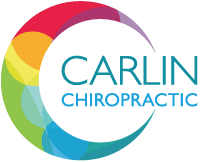
While many sporting contests and training sessions are completed with no occurrence of injury or incident, the odd hit-out can result in the opposite. There are many different kinds of situations that may arise during a match or training, and any part of the body can be injured. While the road to recovery after tearing an anterior cruciate ligament can be arduous and a test of one’s resolve, recovery from a head injury can take even longer. The head is sacrosanct in many sports and when injuries do occur, concussion management should be held paramount. In this blog post from the expert team at Carlin Chiropractic, you will learn how to handle concussions when they occur.
Coaches should be educated when it comes to handling concussion in sport
As a coach, you should not only educate yourself with regards to the skills, tactics and discipline of your chosen sport, but also with managing injuries. It’s important that you understand all the signs of concussion, the symptoms, and after recovery, what needs to be done in the way of concussion management.
When a person experiences concussion, it can be the result of a blow or jolt to the body. This can cause the head to move quickly back and forth, with the brain bouncing around inside the skull. Concussion is extremely dangerous and can be caused by:
- A simple blow to the head from a ball
- A player’s head hitting the ground, after being slung in a tackle, or falling from height
- Being accidentally hit by a teammate or opposition player
- Travelling at speed and a player’s head hitting a solid surface
However, concussions can also occur when the brain accelerates or decelerates in the skull rapidly – not just as a result of direct head trauma.
What are the red flags of concussion?
When an athlete experiences trauma to the head, they are likely to lose consciousness and experience one or more of the symptoms below:
- Neck pain or tenderness
- Double vision
- Weakness or tingling/burning in arms or legs
- Severe or increasing headache
- Seizure or convulsion
- Loss of consciousness
- Deteriorating conscious state
- Vomiting
- Increasingly restless, agitated or combative
Act quickly
As a coach of any level of sport, it is important to identify concussion quickly and remove the affected athlete from play. In professional sport, SCAT5 (Sports Concussion Assessment Tool 5) is used as a concussion assessment tool, and must only be used by medical professionals. In amateur sport, CRT5 (Concussion Recognition Tool 5) is used for evaluating concussion. But these tests should not be used to categorically make or exclude a concussion diagnosis.
After assessment, if a player is suspected of having concussion and medical professionals are not immediately available to assist, the athlete should be referred to a medical facility for urgent assessment.
The basic principles of first aid (DRSABC) should be followed. Do not move the athlete (exceptions can be made for airway management) unless medical professionals such as paramedics, nurses or doctors are on site. An athlete’s helmet should not be removed and assessment for spinal cord injury is critical and should be carried out.
Handling concussion via Chiropractic Care
Treating concussion is vitally important and the expert team at Carlin Chiropractic provide concussion management services. We provide a drug-free alternative for treating concussion issues and restoring overall balance to an athlete’s body and mind.
Contact us today and book an appointment if you think you or any of your loved ones might have a concussion.



